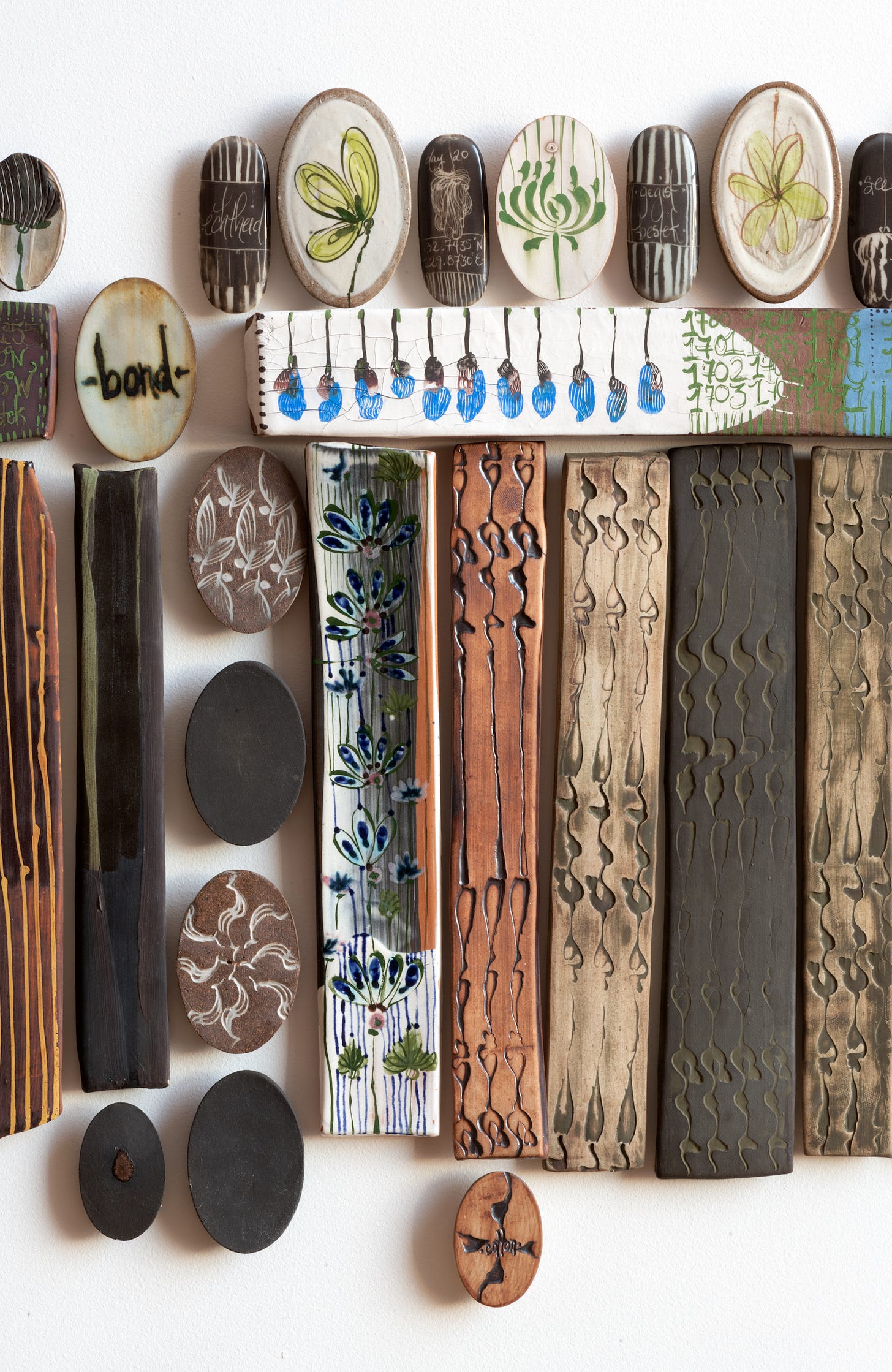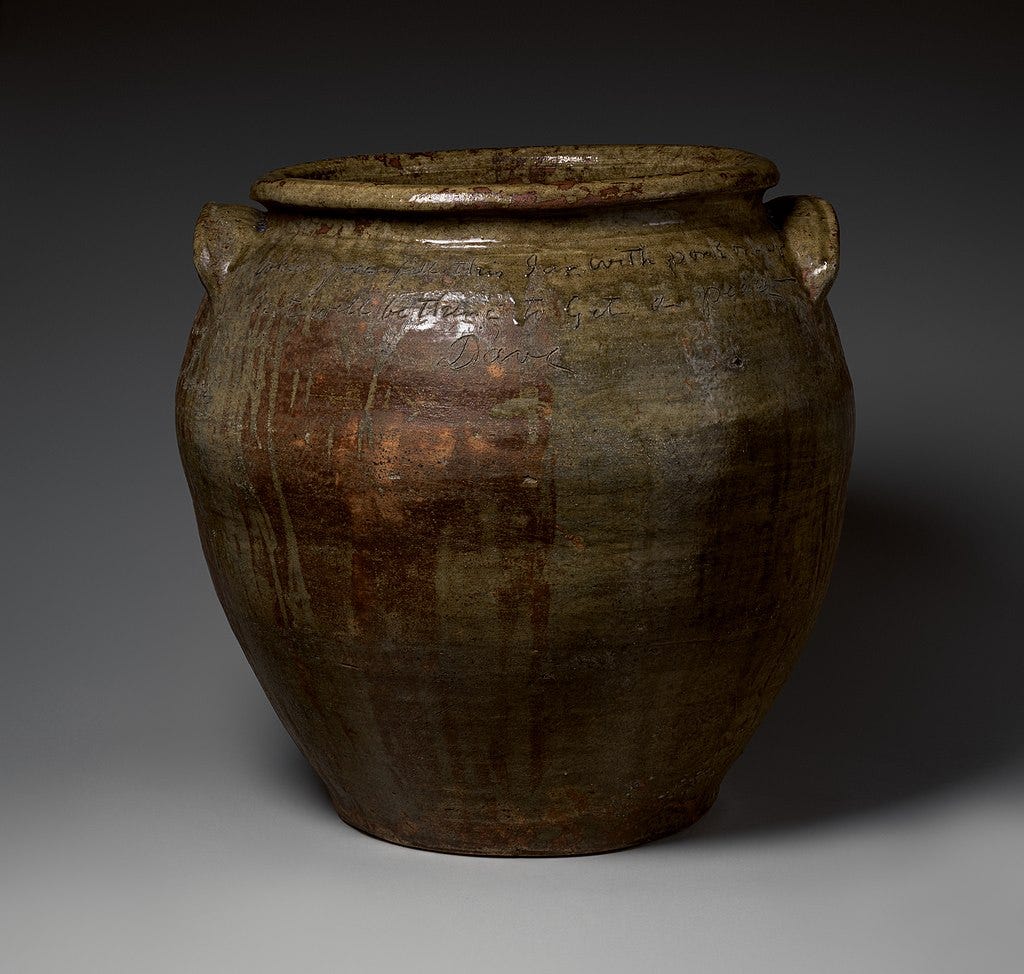Black Artists Are Reshaping How We Think About American Ceramics
Contemporary ceramicists are continuing a long legacy of Black Americans working in clay. As they find new ways to tell their stories, the art world is finally catching up.
Dear Friends,
Even if you don’t follow news from the art world closely, you may have heard of David Drake (“Dave the Potter”). One of countless enslaved, Black American artisans who made stoneware and ceramics for industrial potteries like Edgefield in the 19th century, Drake’s work commands eye-popping prices at auctions today. Why? In part because he signed his pots and sometimes inscribed them with a poem, defying the strict anti-literacy laws of the time.
This week’s new story draws a line from Dave the Potter to some of the groundbreaking Black artists who work in clay today, from the perspective of a writer and former art student who, in her own words, “left college believing that fine artists didn't work with clay, and neither did Black people.”
It’s available only for our paid subscribers here on Substack. If you haven’t yet subscribed, you can see a free preview below.
We always welcome your thoughts and suggestions, which you can offer in a comment, by tagging us in Substack Notes, or via email. Thank you for reading and sharing our stories, for supporting our work with a paid subscription if you can, and for being such a loyal part of the Craftsmanship community.
Sincerely,
Todd Oppenheimer
Publisher & Editor-in-Chief, Craftsmanship Magazine

Black Artists Are Reshaping How We Think About American Ceramics
by
As a Black art student at a predominantly white, Midwestern college in the late 1990s, I rarely saw people or studied artists who looked like me. White men taught my art history courses, which were focused on pale, male painters and sculptors. I learned that ceramics was not fine art; it was a craft. And despite loving the muddy alchemy of shaping clay into vessels, I left college believing that fine artists didn't work with clay, and neither did Black people.
In actuality, Black Americans have used clay to tell their stories for centuries. Many enslaved craftspeople worked in industrial potteries like the Edgefield District in South Carolina, which proliferated due to the region's rich clay and mineral deposits, and local plantations' ever-increasing demand for utilitarian wares. Black artisans churned out thousands of items, helping to perfect the region's signature style of alkaline-glazed stoneware while still finding ways to leave their own artistic marks.

David Drake, aka “Dave the Potter,” worked in various potteries, including Edgefield, from around 1820 through the 1860s. The first known enslaved potter to sign his work, Drake also wrote poetry on his mammoth storage jars, defying antebellum anti-literacy laws. Other enslaved artisans made face jugs: large vessels embellished with stylized facial features that look strikingly similar to West African nkisi sculptures (which are believed to contain spirits or spiritual power).
Today, a groundswell of contemporary Black artists are continuing this legacy, and finding new ways to tell their stories through clay.




